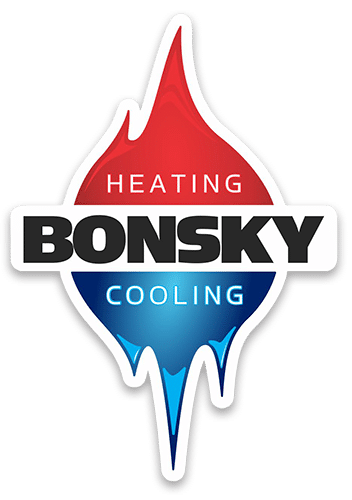GLOSSARY OF HVAC TERMS

As a homeowner, it is important to understand the terms and concepts related to your HVAC system to ensure that it is running efficiently and effectively. At Bonsky Heating and Cooling, we understand that not everyone is an HVAC expert, which is why we have put together a common HVAC terms to help you better understand your system.
A glossary of common HVAC terms and their definitions.
| Term | Description |
| ACCA | A major trade association for the HVAC industry, the Air Conditioning Contractors of America. |
| Air Conditioner | An appliance designed to dehumidify and extract heat from a home or office, leaving the remaining air cooler. |
| Air flow | The volume of air your duct system moves. In general, air conditioners are designed to move about 400 cubic feet per minute (cfm) for each ton of air conditioner capacity. |
| Air handler or air handling unit | A large metal box, part of the indoor unit for a furnace/AC system that contains the blower and heating or cooling elements. |
| Annual Fuel Utilization Efficiency (AFUE) | The thermal efficiency measure of space-heating furnaces and boilers, expressed as a percentage. |
| Boot | The section of shaped sheet metal that transitions the duct on one end to the grille or register on the other end. |
| British Thermal Unit (BTU) | One BTU is the energy required to raise one pound of water one degree Fahrenheit. In the USA, the power of HVAC systems is expressed in BTU/hour. |
| Capacitor | A small, cylindrical component that sends power to the motor that powers an air conditioning system. |
| Checking the charge | Measuring the pressure of the refrigerant of an AC system to determine if it contains the proper amount. |
| Coil | Part of the air conditioner that performs heat transfer to air, mounted inside an air handler or ductwork. |
| Compressor | A device that raises the temperature and pressure of the refrigerant in an air conditioning system. |
| Condenser | A heat exchanger that removes heat from the HVAC system, the “hot” side of an air conditioner or heat pump. |
| Controller | The part of an HVAC system that controls all or part of the system, usually based on input from a thermostat. |
| Delta T (ΔT) | Measurement of the change of the temperature of air moving through the evaporator coil. |
| Evaporator | Part of the basic refrigeration cycle that absorbs or adds heat to the system, usually to absorb heat from the air. |
| Furnace | Part of an HVAC system that adds heat to the air of a home. |
| Grille | Register used primarily in return air vents that doesn’t contain any moving parts. |
| Heat Exchanger | Part of an HVAC system that transfer heat from the hot parts of the system to the cold parts of the system. |
| Heat pump | Following the same principles as an air conditioner, it moves heat from inside to outside in the summer months and from outside to inside in the winter months. |
| High Efficiency | Refers to the AFUE rating of a furnace, usually referring to a 90% or higher efficiency furnace. |
| HVAC | Abbreviation for the general name to cover the field of Heating, ventilation, and air conditioning. Can be pronounced “H-vac” or spelled out as H-V-A-C. |
| Latent heat | Heat that must be removed from the air to remove moisture. |
| Line set | Tubing that connects the condensing unit to the evaporator coil or an air conditioner. |
| Load calculation | The process of determining the proper size of an air conditioner and/or furnace for a home. |
| Media air cleaner | More efficient air filters for an HVAC system, constructed of materials that catch smaller particles passing through the duct system. |
| MERV | A rating for filters used in HVAC systems. The higher the Minimum Efficiency Reporting Value of a filter, the more particles it catches, and the more restrictive the airflow. |
| Plenum | The (usually) sheet metal box connected to either side of an HVAC system’s air handler. |
| Refrigerant | The coolant that does the workload of modern air conditioner systems. |
| Refrigeration cycle | The cycle that allows an air conditioner to transfer heat from inside and send it outside, using a compressor, condenser, and refrigerant. |
| Register | Cover for a heating or air conditioner grate inside a home. |
| Return | The section of an HVAC ductwork system that “returns” air from the house back to the air handler to be conditioned again. May also be referred to as “fresh air return.” |
| SEER | Seasonal Energy Efficiency Ratio measures air conditioning and heat pump cooling efficiency. |
| Split system | An air conditioning system that includes an indoor unit (air handler and evaporator coil) and an outdoor unit (the condensing unit) connected by the lineset/coolant lines. |
| Standard Efficiency | Refers to the AFUE rating of a furnace, typically in the 80% range. |
| Static Pressure | The pressure inside a home’s ductwork system. |
| Supply | The part of a home’s duct system that moves conditioned air into the living space from the furnace or AC. |
| Thermostat | A system that monitors and regulates an HVAC system. |
| Tons of air conditioning or tonnage | The capacity of an air conditioning system. |
| Trunk | A large piece of ductwork that attaches directly to the plenum that contains all the branches out to a house’s vents. |
| Two-stage | A two-stage air conditioner is designed to operate on high and low settings during different seasons. |
| Zoning System | Divides a building into sections or zones which may be controlled independently of each other. |
By understanding these HVAC terms and their meanings, homeowners can better communicate with HVAC professionals and make informed decisions when it comes to their heating and cooling needs. For more information on HVAC systems or to schedule a service appointment, contact Bonsky Heating and Cooling at (330) 499-3633.

